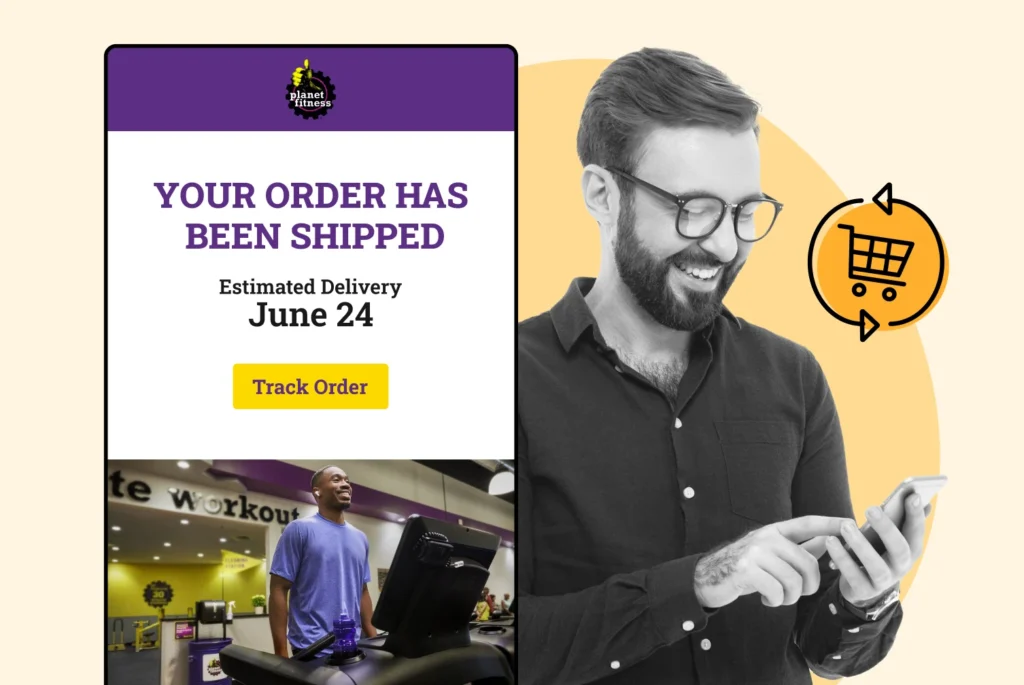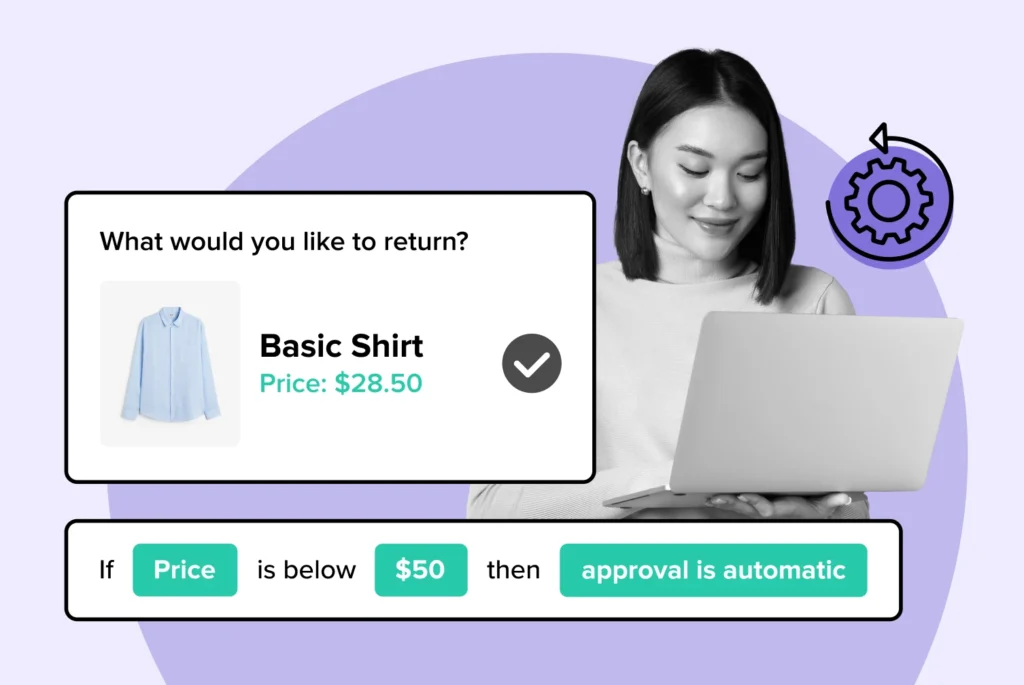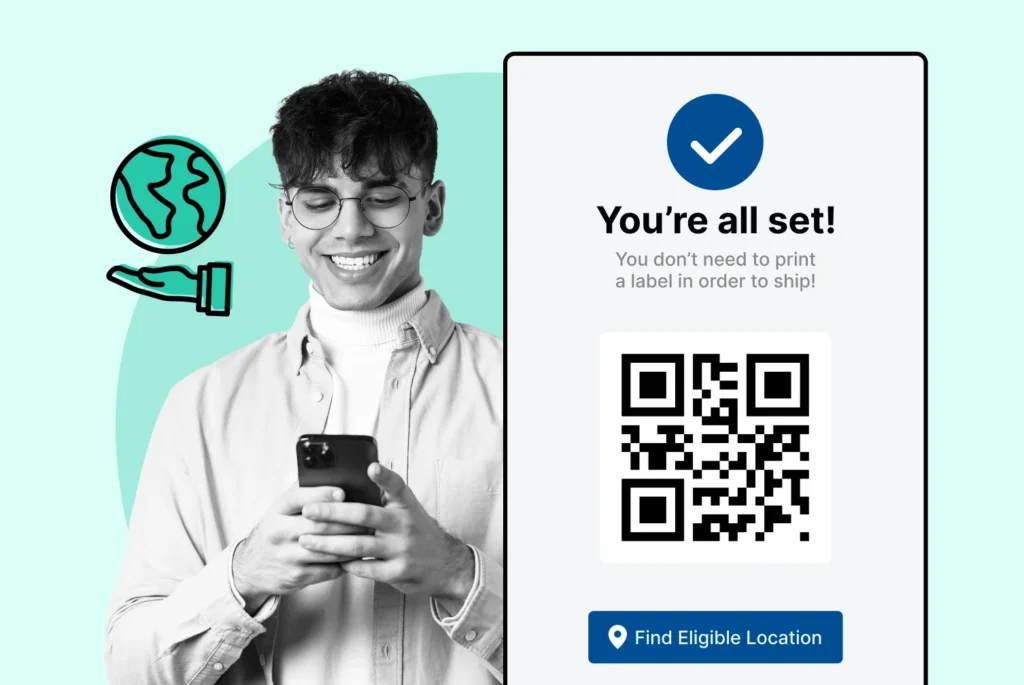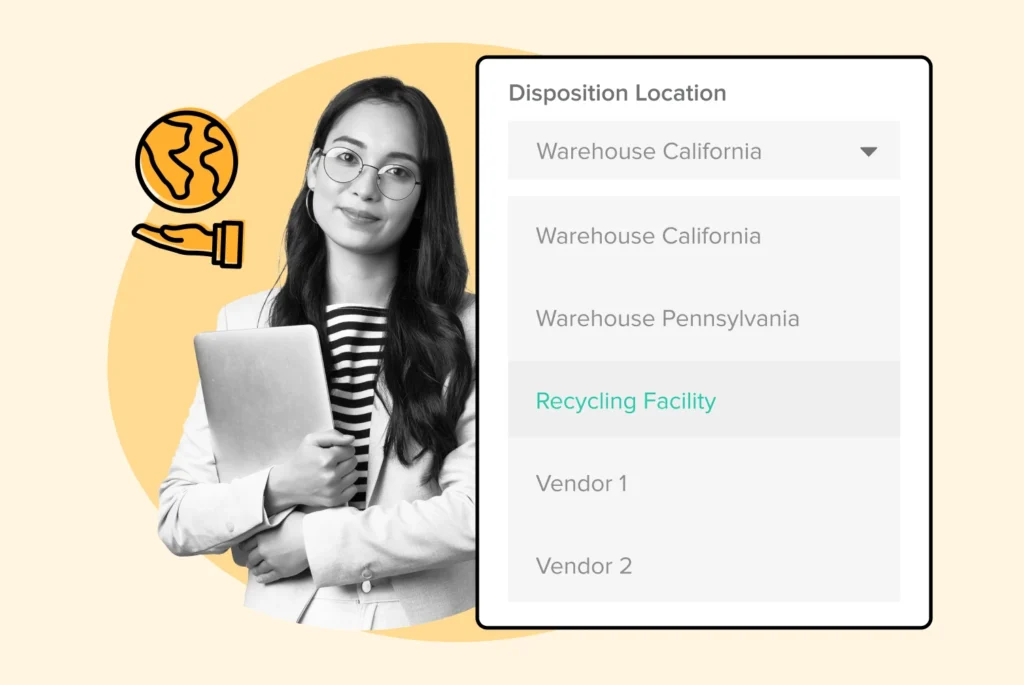
Understanding Post-Purchase Dissonance: Why It Matters
How to handle post-purchase dissonance. Evidence-based strategies to alleviate dissonance, ensuring a smooth customer journey!
Shipping, Tracking & Notifications
Boost customer experience and reduce support tickets
Realtime order and shipment tracking
Proactive order and shipping notifications
AI-Enhanced Discounted Labels
Predictive pre-purchase estimated delivery dates
Self-Serivce branded order tracking
Effortless experience delivered
Identify and Resolve Order Issues
Realtime order and shipment tracking
Make returns profitable and delight customers
Flexibility to define any return destinations & conditions
Simplify returns for your customers and team
Incentivize exchanges over returns
Returns management made easy for your team
Returns management made easy for your team
Easy claims and smart upsells
Understand why your customers are returning
In-Store & Curbside Pickup
Unify the online and the in-store experience
Hassle-free pickup experience for customers
In-Store dashboard to keep operations streamlined
In-Store and Online orders unified
Drive foot-traffic to your stores
Shipping, Tracking & Notifications
Boost customer experience and reduce support tickets
Realtime order and shipment tracking
Proactive order and shipping notifications
AI-Enhanced Discounted Labels
Predictive pre-purchase estimated delivery dates
Self-Serivce branded order tracking
Effortless experience delivered
Identify and Resolve Order Issues
Realtime order and shipment tracking
Make returns profitable and delight customers
Flexibility to define any return destinations & conditions
Simplify returns for your customers and team
Incentivize exchanges over returns
Returns management made easy for your team
Returns management made easy for your team
Understand why your customers are returning
In-Store & Curbside Pickup
Unify the online and the in-store experience
Hassle-free pickup experience for customers
In-Store Dashboard to keep operations streamlined
In-Store and Online orders unified
Drive foot-traffic to your stores
Boost customer experience and reduce support tickets
Realtime order and shipment tracking
Proactive order and shipping notifications
AI-Enhanced Discounted Labels
Predictive pre-purchase estimated delivery dates
Self-Serivce branded order tracking
Effortless experience delivered
Make returns profitable and delight customers
Flexibility to define any return destinations & conditions
Simplify returns for your customers and team
Incentivize exchanges over returns
Returns management made easy for your team
Equip your team for precise return checks.
Easy claims and smart upsells
Understand why your customers are returning
Unify the online and the in-store experience
Hassle-free pickup experience for customers
In-Store Dashboard to keep operations streamlined
In-Store and Online orders unified
Drive foot-traffic to your stores
Find the answer to all your questions
Take a step by step trip through our functionality to see how we can improve your ecommerce processes.
Explore the most comon questions about WeSupply
Calculate the ROI that WeSupply can bring you
Read actionable articles on how to optimize your post-purchase experience and decrease support tickets
Get inspired by stories of how our customers implemented an effortless post-purchase experience
Wondering if WeSupply is a good fit for you? Read through our use cases to see how we can help you increase conversion & improve CX!
A Deep Dive into Top Companies' Order Tracking & Returns Strategy
Find the answer to all your questions
Explore the most comon questions about WeSupply
Calculate the ROI that WeSupply can bring you
Request a no strings attached review of your current shopping experience and missed conversion opportunities
Take a step by step trip through our functionality to see how we can improve your ecommerce processes.
Read actionable articles on how to optimize your post-purchase experience and decrease support tickets
Get inspired by stories of how our customers implemented an effortless post-purchase experience
A Deep Dive into Top Companies' Order Tracking & Returns Strategy
Wondering if WeSupply is a good fit for you? Read through our use cases to see how we can help you increase conversion & improve CX!

The swimwear industry faces distinct challenges due to bracketing—a consumer behavior where multiple sizes or styles are ordered with the intent to return non-fitting items. This practice, while seemingly benign, triggers a cascade of impacts on inventory management, logistics, costs, and sustainability efforts for retailers. Understanding these nuanced effects, known as the “bracketing impact on swimwear industry,” is crucial for navigating the rising tide of returns and devising strategies to ensure a sustainable, profitable swimwear market.
Bracketing in e-commerce, particularly prevalent in the swimwear industry, entails shoppers buying multiple sizes or styles and returning the rest, leading to increased costs and logistical challenges for retailers.
Retailers are employing strategies such as providing detailed product descriptions, embracing technology for virtual fittings, and analyzing returns data to reduce bracketing and its associated financial, logistical, and environmental impact.
Technological advancements like AI and AR, along with innovative retail strategies, are expected to continue shaping the future of e-commerce, potentially reducing the need for bracketing by enhancing the online shopping experience.
WeSupply offers innovative solutions for swimwear retailers to combat bracketing. With ‘Buy Online, Return In Store,‘ customers enjoy convenient returns while driving traffic and increasing order values. Intelligent dispositions optimize efficiency and sustainability. Leveraging return analytics, WeSupply helps identify trends and refine offerings. Ready to elevate your retail experience? Let’s dive into WeSupply today!
In an era where online shopping matches the frequency of in-store visits, consumers have devised new strategies to secure the most suitable fit and style for their expenditure. Bracketing is one such strategy, which involves online shoppers purchasing multiple sizes or styles of a product, intending to return the unsuitable ones. This approach allows ecommerce shoppers to replicate the ‘try before you buy’ experience of traditional retail stores, right in the comfort of their homes.
While bracketing has become a common practice across various online fashion markets, it is particularly prevalent in the swimwear industry. The reasons are quite intuitive – swimsuits are notoriously tricky to size correctly without trying them on, and online retailers offer an array of styles and cuts that can vary significantly in fit. Consequently, consumers utilize bracketing by ordering various sizes of swimwear to identify the perfect fit, and subsequently returning the ill-suited ones.
This trend, while beneficial for the customer, poses a unique set of challenges for brands and retailers. Some of these challenges include:
Increased costs due to higher return rates
Inventory management issues
Difficulty in predicting demand for different sizes
Potential negative impact on sustainability efforts
In the competitive world of fashion brands, both brands and retailers need to find innovative solutions to address these challenges and provide a seamless online shopping experience for their customers.
Bracketing significantly affects the swimwear market. Motivated by the quest for the perfect fit and the right body shape, online shoppers frequently order numerous sizes of the same item. While this may seem like a win-win situation at first glance, it can have serious implications for swimwear brands and fashion retailers alike.
Bracketing not only leads to increased return rates but also creates a ripple effect throughout the entire supply chain, affecting everything from inventory management to logistics and customer service. For consumers, the motivation behind this behavior is simple: they want to ensure that they get the best possible fit and style. And in an industry where fit is paramount, many brands and retailers continue to accommodate this behavior to meet consumer needs. However, the question remains – at what cost?
While bracketing is customer-focused, it presents considerable hurdles for online retailers. It may appear as a minor annoyance initially, but the underlying complications are far more intricate. Dealing with high return rates due to bracketing can be a daunting task, both financially and logistically.
These challenges are not limited to just processing and restocking a large volume of returned items. They also encompass:
the additional labor costs associated with reverse logistics
the financial burden of offering returnless refunds or selling returned items at a loss
in some cases, retailers are even forced to discard returned items, exacerbating the financial challenges and contributing to environmental concerns.
Bracketing carries significant financial ramifications. In 2022 alone, the value of merchandise returns reached an estimated $279 billion, highlighting the immense financial strain this practice places on retailers. This figure not only represents lost sales but also the additional costs associated with handling these returns, from transportation to restocking.
From a logistical standpoint, handling bracketing increases complexity in reverse logistics, which involves transportation from the customer back to distribution centers or restocking locations. Retailers must balance the financial strain of returns with the need to maintain a seamless customer experience, which often includes an expectation of free returns. This balance is particularly challenging in the swimwear industry, where the high frequency of bracketing exacerbates these challenges.
While the challenges posed by bracketing extend across retail sectors, they take on a unique dimension in the swimwear industry. Due to the nature of their products, swimwear retailers face unique fit challenges. Swimsuits are difficult to size correctly without trying them on, leading to increased bracketing activity. To mitigate this, swimwear retailers take diverse approaches, including:
Using diverse models to showcase how the swimsuit fits different body types
Providing detailed product descriptions that include measurements and fit information
Leveraging user-generated reviews to build customer trust and confidence in sizes
These strategies help online customers make more informed decisions when shopping online for swimwear.
Despite these efforts, managing the high volume and frequency of returns resulting from bracketing remains a significant challenge. Some swimwear retailers have resorted to adopting stricter exchange policies or shorter return windows to mitigate the costs associated with bracketed orders. However, these measures need to be balanced against customer satisfaction and the potential negative impact on sales.
WeSupply offers a range of solutions that help manage the high return rates, streamline reverse logistics, and reduce associated costs, while supporting a customer-centric experience. Here’s how WeSupply services can be integrated or highlighted to tackle these specific challenges:
Implementing automated return eligibility checks with WeSupply’s Return Policy Enforcer can help mitigate the volume of returns from bracketing by establishing specific guidelines, such as charging restocking fees for excessive or non-compliant returns, and ensuring customers adhere to fair return practices. Tailoring these policies can help retailers balance customer satisfaction with protection against abuse.
WeSupply’s self-service returns portal empowers customers to manage returns independently, offering an efficient experience while reducing the burden on customer service teams. Additionally, real-time tracking and proactive notifications keep customers informed throughout the return journey, improving satisfaction and reducing follow-up inquiries.
WeSupply provides detailed analytics on return patterns, including data specific to frequent bracketed returns. Retailers can use these insights to adjust policies, optimize inventory based on popular return sizes, and improve product descriptions to reduce unnecessary returns.
The environmental impact of returned products is significant, particularly in industries like swimwear. WeSupply’s Intelligent Dispositions feature can help retailers manage items that may otherwise be discarded by routing returns directly to recycling centers or resale channels, supporting eco-friendly practices.
WeSupply enables retailers to offer exchanges or store credits as alternatives to returns, particularly useful for industries with high bracketing rates like swimwear, where sizing is crucial. Encouraging exchanges over returns can help retain revenue, reduce restocking expenses, and maintain customer satisfaction.
By adopting WeSupply’s tailored solutions, retailers can tackle the unique challenges of bracketing with increased operational efficiency, sustainable practices, and improved profitability— all without compromising on customer satisfaction.
Ready to dive deeper? In this article, we’ll explore each strategy in detail, showing how WeSupply’s tools can transform the way you manage bracketing returns and protect your bottom line.
Despite the hurdles brought about by bracketing, retailers can implement effective strategies to diminish its occurrence. One of the most effective ways to combat bracketing is to provide detailed product descriptions and comprehensive sizing information. This not only helps customers make more informed purchasing decisions but also reduces the likelihood of returns due to fit or style dissatisfaction.
Technological solutions also play a pivotal role in addressing the issue of bracketing. Some benefits of using automated returns processing systems include:
Increased efficiency
Streamlined returns process
Reduced burden on retailers
Valuable insights into why customers are returning items, enabling retailers to address these issues at their root and prevent them from recurring in the future.
WeSupply implements strategies to reduce bracketing by offering a streamlined returns process. By optimizing the return workflow, it minimizes the need for customers to order multiple variants with the intention of returning some, thus reducing operational strain and costs.
Key strategies:
Analysis of return patterns to identify and address bracketing behaviors.
Enhanced customer feedback collection to understand and mitigate return reasons.
This approach leads to a more efficient returns process, discouraging unnecessary orders while maintaining customer satisfaction.
Bracketing presents not only financial and logistical problems but also significant environmental issues. Each returned item contributes to the carbon footprint due to transportation, packaging, and processing. When the volume of returns skyrockets due to bracketing, the environmental impact becomes a pressing concern.
To mitigate the environmental impact, retailers can adopt sustainable practices. This could include initiatives to consolidate shipments, promote the resale of returned items, or switch to eco-friendly packaging materials. These measures not only reduce the carbon footprint but also resonate with consumers’ growing awareness and demand for sustainable practices.
WeSupply addresses sustainability concerns associated with bracketing by implementing printerless returns and Intelligent Dispositions. Customers can use QR codes for returns, reducing paper waste. Additionally, the Intelligent Dispositions system ensures returned items are directed to recycling centers, minimizing environmental impact. These initiatives demonstrate WeSupply’s commitment to eco-friendly business practices while streamlining the returns process.
While bracketing presents obstacles, it also provides retailers with an opportunity to scrutinize returns data and glean valuable insights. Returns analytics can identify the root causes behind product returns, paving the way for strategic measures to minimize return rates and increase conversion rates. By addressing issues such as product quality and size discrepancies, retailers can significantly improve customer satisfaction.
In addition to improving customer satisfaction, data analytics can also help retailers optimize their operations. Here are some ways data analytics can benefit retailers:
Identifying patterns and trends in consumer preferences to inform marketing and product strategies
Better inventory management through returns analytics to reduce operational costs
Avoiding overstocking items that are prone to returns, leading to lower warehousing and manpower costs
Returns analytics provides valuable insights into consumer behavior that can be used to optimize operations, enhance customer satisfaction, and drive business growth. By categorizing returns based on factors like product quality, size discrepancies, or customer dissatisfaction, retailers can pinpoint the exact areas that need improvement for a smoother shopping experience.
Furthermore, consumer behavior analytics can reveal friction points in the checkout process that can lead to cart abandonment. Understanding these friction points can inform retailers on areas to improve, ultimately increasing conversion rates.
Analyzing search history and clickstream data can also help retailers understand and cater to customer preferences, leading to a more personalized shopping experience and potentially higher conversion rates.
Applying returns analytics to inventory and marketing strategies can yield significant benefits for swimwear retailers. Products with high return rates can highlight areas where product improvements are needed, or they may suggest a need for re-evaluation of the target market. On the other hand, products with low return rates can signal businesses to focus their marketing efforts on these items for better results.
Moreover, analyzing the reasons for returns can help retailers identify whether issues are related to inventory quality, supply chain management, or customer experience, and make the necessary adjustments. Returns data can also inform decisions on which products to discontinue or which new items to introduce, thereby aligning inventory with customer demand and preferences. By understanding common reasons for cart abandonment, swimwear retailers can streamline their checkout process and reduce the likelihood of returns.
WeSupply leverages returns analytics to address bracketing issues, enhancing both customer satisfaction and business efficiency. By analyzing return data, businesses can identify patterns and root causes of returns, enabling targeted improvements in product offerings and return policies. This data-driven approach helps reduce unnecessary returns and exchanges, optimizing the customer experience and improving profit margins.
Key features:
Identification of frequently returned products and reasons for returns.
Insights into customer behavior, identifying serial returners.
Analysis of SKU-level return reasons, such as color, quality, and size.
Collection of direct product feedback from customers.
Understanding the financial impact of returns and how they affect customer lifetime value.
Regional analysis of returns to identify specific market issues.
By leveraging these insights, businesses can refine their strategies, reduce return rates, and ultimately increase customer lifetime value. Ready to see how we can revolutionize your returns process? Book a demo now!
Returns Analytics for eCommerce Business
Book a quick call with our experts to see how WeSupply can help you take analytics to the next level! Customers often return items because they were not satisfied with the product. Examining these returns can give businesses a lot of insight into what their customers want.
Though bracketing brings substantial difficulties, it also affords retailers an opportunity to:
Comprehend their customers better
Enhance their offerings
Diversify their inventory
Provide a more personalized shopping experience
Encourage exchanges over returns
The rise of bracketing provides a unique opportunity for retailers.
Embracing bracketing as an opportunity rather than a challenge can pave the way for innovative solutions that not only address the issues at hand but also enhance the overall shopping experience. By understanding customer preferences and buying behaviors, retailers can tailor their offerings to meet customer needs, ultimately driving customer satisfaction and loyalty.
Innovation is fundamental in tackling the challenges brought about by bracketing. By adopting innovative retail strategies, retailers can lessen the necessity for bracketing and reduce returns. This could include:
Leveraging technology to provide a more personalized shopping experience
Diversifying inventory to cater to a broader range of customer preferences
Encouraging exchanges over returns to minimize the financial and logistical impact of returns.
Ultimately, the goal of these strategies is to enhance the shopping experience for the customer. By making the shopping process more efficient and enjoyable, retailers can encourage customers to explore their offerings, make informed purchasing decisions, and reduce the likelihood of returns. This in turn can drive customer satisfaction, loyalty, and ultimately, profitability.
Personalization and technology can play a crucial role in reducing the need for bracketing. For instance, online retailers can utilize technology like Truefit and virtual fitting rooms, which provide integration with retailers’ checkout processes to guide customers toward sizes that fit well across different brands, reducing returns due to bracketing by up to 50% for single-brand retailers.
Moreover, creating personal relationships between store associates and customers in luxury brands can discourage bracketing by offering assurances on finding the right fit without over-ordering. This level of personalized service can significantly reduce the incidence of bracketing, contributing to a more satisfying shopping experience for the customer and improved profitability for the retailer.
Encouraging exploration and minimizing returns can also be achieved through innovative retail strategies. For instance, some retailers use pop-up messages from customer service teams to encourage sustainable consumption and offer personal styling advice to ensure customers choose the correct size. This not only reduces the likelihood of returns but also resonates with consumers’ growing awareness and demand for sustainable consumption.
Another innovative strategy is to offer omnichannel delivery services that allow customers to return goods in person at stores. This often results in the customer making an additional purchase, helping to recoup sales lost from returns.
With WeSupply’s “Buy Online, Return In Store” feature, online shoppers enjoy the convenience of in-store returns, which not only reduces return rates but also drives foot traffic to physical stores. By offering this seamless return option, businesses can effectively reduce cart abandonment and increase the average order value. Additionally, the integration of intelligent dispositions helps save on transportation costs, further optimizing the returns process and enhancing overall profitability. This approach often leads to customers making additional purchases during their in-store visits, helping to recoup sales lost from returns.
Other retailers are experimenting with “try before you buy” models, where customers can order clothes, try them at home, and only pay for what they keep, which can decrease the overall volume of returns.
WeSupply’s Pre-built Return Policies provide swimwear retailers with innovative tools to tackle the high return rates from bracketing, improving both the shopping experience and operational efficiency. With targeted policies, brands can maintain profitability and deliver a clear, reliable return process that enhances customer trust. Key features include:
Return Shipping Fees Based on Reason: Charge return shipping based on return reasons, encouraging thoughtful purchases and offsetting costs.
SKU-Specific Non-Returnable Policies: Designate certain SKUs as non-returnable, minimizing return processing costs and enhancing loyalty with VIP return privileges.
Do Not Accept Returns for Used Products: Implement a policy to make used items non-returnable, safeguarding product quality and brand reputation. For certain items, offer alternatives like partial refunds or recycling options, which can save on return shipping and meet hygiene standards.
Tag Requirement for Returns: Accept returns only if original tags are intact, preserving resale value and protecting product quality.
Restocking Fees on Select Products: Apply restocking fees on certain items to discourage unnecessary returns and support revenue stability.
With WeSupply’s tailored return policies, swimwear retailers can effectively manage the unique challenges of bracketing, safeguarding profitability while providing a seamless customer experience. Each feature is designed to encourage thoughtful purchasing, streamline return logistics, and preserve product value, helping brands thrive in a high-return environment. Interested in more strategies? Check out our other Pre-built Return Policies designed to address a variety of industry needs.
Looking ahead, technological advancements will persist in molding the landscape of bracketing and e-commerce. For instance, Augmented Reality (AR) is expected to continue transforming online shopping experiences, allowing customers in the swimwear industry to visualize products in a more realistic manner before making a purchase. Artificial Intelligence (AI) and machine learning are increasingly used to provide automated, personalized shopping experiences, which could affect how swimwear customers find and purchase products online.
On the other hand, developments in payment technology may streamline the checkout process, reducing cart abandonment and simplifying the returns process. Sustainability concerns are also influencing consumer behavior, prompting swimwear brands to adopt eco-friendly practices in packaging and product creation. These technological advancements and consumer trends are set to redefine the future of bracketing and e-commerce in the swimwear industry.
In conclusion, managing the wave of bracketing in the swimwear industry necessitates a careful balance between customer satisfaction and operational efficiency. While bracketing presents significant challenges, it also offers opportunities for retailers to better understand their customers and improve their offerings.
By leveraging data analytics, adopting sustainable practices, and embracing innovative strategies, swimwear retailers can turn the tide on bracketing, enhancing the shopping experience for customers while maintaining profitability.
In summary, bracketing is a prevalent practice in the swimwear industry, driven by the desire to find the perfect fit. While it poses significant challenges to retailers, it also presents opportunities to enhance the shopping experience, improve operations, and drive business growth. By embracing innovative strategies, leveraging data analytics, and adopting sustainable practices, swimwear retailers can navigate the challenges and opportunities presented by bracketing, striking a balance between customer satisfaction and operational efficiency.
WeSupply offers innovative solutions for retailers in the swimwear industry to mitigate the impact of bracketing. Through features like “Buy Online, Return In Store,” customers enjoy convenient returns while retailers drive traffic to physical stores, increasing the average order value and reducing cart abandonment. With intelligent dispositions, businesses save on transportation costs, optimizing efficiency and contribute to sustainability. By leveraging return analytics, WeSupply helps retailers understand return patterns, identify serial returners, and refine product offerings. These strategies not only minimize returns but also lead to additional purchases, mitigating the sales impact of bracketing in the swimwear industry. Ready to revolutionize your retail game? Let’s get started with WeSupply today!
Speed up returns process
Book a quick call with our experts to see how WeSupply’s self-service returns makes it super easy for your customers to return anything, anytime – without needing to submit customer support tickets or call in!
Bracketing with clothes is when you purchase multiple versions of an item with the intention of keeping only one and returning the rest, often due to uncertainties around fit and personal style. It is a common practice in the fashion and apparel industry.
Bracketing is a shopping practice where shoppers buy multiple sizes or styles with the intention of returning the ones that don’t work out. It can help ensure a perfect fit or style choice.
Bracketing poses financial, logistical, and environmental challenges to retailers, such as high return rates, increased complexity in reverse logistics, and a significant carbon footprint. These factors can impact the overall operations and sustainability of the business.
WeSupply offers innovative solutions tailored to retailers in the swimwear sector, aiming to mitigate the effects of bracketing on their businesses.
With intelligent dispositions, WeSupply helps businesses save on transportation costs while optimizing efficiency and contributing to sustainability efforts. Additionally, our platform leverages return analytics to help retailers understand return patterns, identify serial returners, and refine their product offerings.
Retailers can initiate their journey with WeSupply by booking a demo today.

Learn How To Create Successful Post Purchase Email Campaigns
Build an effective post-purchase email flow that helps you increase customer satisfaction and drive revenue growth!
Consumers seek the best deals on:

How to handle post-purchase dissonance. Evidence-based strategies to alleviate dissonance, ensuring a smooth customer journey!

Keep your brand thriving when the market is strained: adapt your marketing, streamline operations, and enhance customer retention!

Let’s identify and dissect the best options ready to enhance your support system, with a focus on integration, experience, and scalability!

Let’s identify and dissect the best options ready to enhance your support system, with a focus on integration, experience, and scalability!

Keep your brand thriving when the market is strained: adapt your marketing, streamline operations, and enhance customer retention!

Discover tactics that satisfy both today’s buyers and tomorrow’s bottom line without compromising our planet’s health!

Revolutionize your business and lead the charge toward a greener e-commerce model: strategies for waste minimization & resource maximization!

Understanding mobile shopping trends is pivotal in today’s retail ecosystem. Stay ahead of them to navigate the evolution of mobile shopping!

We’ll guide you through tactics that enhance loyalty and customer satisfaction, all while keeping your profit margins healthy!